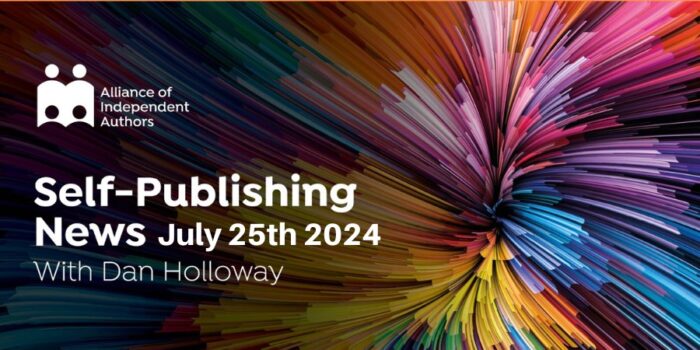Interested in publishing your book as an audiobook? It’s the fastest-growing publishing market, and a great opportunity for indie authors, but most know little about audio-first writing techniques. Whether you write fiction or non-fiction, a few cunning radio writing techniques can really help your script to shine – and your narrator and listeners will thank you! Jules Horne, author of Writing for Audiobooks: Audio-First for Flow & Impact, shares six radio editing tipsto help you get your writing ready for audiobooks.
Producing an audiobook is expensive, and with just a bit of editing work before your manuscript is sent to the studio or voice artist, you’ll get a better, more ear-friendly result that helps your narrator to deliver a more powerful performance. These tips are drawn from my background in BBC radio and spoken word writing – I hope you find them useful!
1. Simplify your writing for audiobooks
Audio is a linear medium. The recording whizzes by and if listeners don’t catch something, it’s gone. With print and ebooks, readers can easily scan the text and check back. With audio, this is far less likely. What’s more, listeners can be listening in all sorts of situations, usually multitasking and in less-than-optimum technical quality. Writing for radio calls for great clarity and economy (which is good writing, to be fair – only far, far more so!)
Try this:
Imagine your listener as a dog-walking, child-wrangling, commuter wearing tiny earbud headphones. Or (radio flashback) a shortwave listener with a crackly radio in a log cabin in the woods. Write with the clarity you need to get through to them. Bigger, bolder, stronger verbs, tight precision. And then…
2. Read your writing aloud
Radio thrives on shorter sentences, and a writing voice more aligned to the spoken word and an informal register. Some writers naturally do this, and have a strong focus on rhythm, pace, and sonic effects. Which is great news if you want to get into audiobooks!
Most, though, have a writing voice that’s more formal and literary than their spoken voice, with longer sentences, “which” clauses, long subordinate clauses, asides and backflips. This is fine in print and ebooks – less so for audio. Note: voice artists are true artists, and great ones can make even the telephone directory sound enticing. You may fall in love with your book in their beautifully resonant/gravelly/seductive voice. But don’t be seduced by smoke and mirrors! With a true audio-friendly script, they’ll love you back, enjoy recording your book, and deliver a far better result.
Try this:
Read your book aloud while writing it. And I mean really aloud. Not in your inner head voice. Perform it. This will reveal anything that’s long, unwieldy and has you gasping for breath. It’ll also show up overwriting – those times when you’ve over-egged a perfectly good adjective with an unnecessary adverb, for example. Or written long qualifying “which” clauses” that meander off in an aside – often, this kind of sentence can be broken up. Notice, too, when sentences “land” well on a significant word or phrase (a tip from performance) or when they run out of steam with an extra clause that lacks punch. The discipline of doing this will make you a better editor all round.
3. Context is king
Since audio is linear and whizzes by, you need to make more effort to orientate your listener. Clear signposts are vital. It’s best to establish a clear context first, then develop the detail. In other words, avoid over-cluttering in those all-important first few words. With non-fiction, use structuring words and phrases more emphatically to shape the logic. Note, too, that ears need time to tune in, so openings should be even clearer.
Try this:
With non-fiction, use more “signpost” words and phrases or connectives that help to shape the arc of meaning in your sentences and paragraphs – firstly, secondly, therefore, in a nutshell. This kind of phrase helps to create flow and pull the listener more actively through your writing. In fiction, simplify your openings (eg chapters and new scenes) and make sure the “key” words land, so that a picture can easily form in the listener’s mind. Eg “cliff edge” is vital, details of the gravel type and what the character is wearing, less so. Reinforce these key elements with “touches” as the story progresses, to keep them alive for the listener. Hooks such as questions can be helpful for flow, too.
4. Think script
When you hand over your audiobook to a narrator, it essentially becomes a script. It’s a blueprint for performance, more like a stage or radio drama piece. Think of Charles Dickens and his reading tours, when he enthralled spellbound audiences – no mumbling apologetically into a manuscript for him! This is a mindset shift for many authors, but it really helps.
Try this:
Embrace your inner actor (you know you want to!) Put yourself in the narrator’s shoes and see it from their perspective. Do your characters have vivid, distinct voices? Are they fun to read? Is their dialogue based on dramatic action that drives the plot, or simply conversation which can be culled? Do you need all those “he said, she saids”? Can you describe a character action instead, to build a more detailed, sense-rich picture? If you’re writing non-fiction, is your voice over-formal? Try using contractions. Record yourself, and listen back to the music. Listen out for the rise and fall of sentence shapes, and whether they’re satisfying and varied to read. Do you have any rhythm tics, such as lots of sentences that start with subordinating clauses?
5. Whispersync
If your book is on Kindle, you’ll be interested in Audible’s Whispersync feature. It synchronizes the ebook and audiobook versions so that you can seamlessly pick up where you left off. For this to work, though, both versions of the book need to be pretty well identical. So chances are, you’ll want to write your next book from an audio-friendly perspective, so that you don’t need to edit it for the different medium. Who knows, you may even discover the joy of audio-first thinking, and want to narrate your own audiobook! Which is a whole other story…

For more advice on writing better books for audio, read Jules Horne's latest addition to her Method Writing series
Try this:
Listen to lots of audiobook samples in your genre – similar to the Look Inside feature on Amazon. Note the emotional qualities of each narrator. Do they project calm, excitement, authority, edginess? What do you need for your book? Sometimes it’s good to hear non-fiction read by the author, rather than a voice artist – it can sound more authentic and authoritative. Would you enjoy narrat your own book?
6. Non-fiction note
Graphs, images, tables and other visual elements often used in non-fiction don’t translate well to audio. Some can be adapted, but there’s a better solution: create a downloadable PDF with any information of this type. This can be uploaded to Audible along with your sound file, as a download for readers. You can also post it on your website. It’s a good way to add extra value to your audiobook.
OVER TO YOU Do you have any tips or tricks that have helped you improve the quality of your audio books? We've love to hear them!
#Indieauthors - like to make your books work well in audio format? Read these simple top tips on writing for audio by a radio professional at @Method_Writing! Share on XOTHER USEFUL POSTS ABOUT AUDIO BOOKS
From the ALLi Author Advice Center Archive





Not a writer, but came here after a rabbit hole when I read for the first time about the style this century to avoid over-using ‘said’. I just wanted to express my appreciation for how lovely this article sounded in my head – a real demonstration of Jules’s skills!
Brilliant article. Thanks you. I found that the fashionable way of omitting attributions doesn’t work too well in audio.
*Thank you [not thanks you] 🙂
That’s useful to know about the Audible diagram request. In radio drama, too, it’s hard to distinguish too many characters in a scene. They can literally ‘disappear’ if they don’t get a chance to talk for a while 🙂
Excellent tips! I’ve done five audiobooks so far and listening to the narrator has really pointed out my strengths and weaknesses in my writing. I now DO read aloud every book before final edits. It makes such a difference.
Thank you for the tips on including a PDF with all diagrams for nonfiction audio. I’m going to start recording my own nonfiction books and had wondered what to do about that as they include a lot of step-by-step diagrams and screenshots.
I’m saving this article in my most read again and again files.
Glad you find them useful, Amy! Interesting that it’s changed your writing approach – mine, too! I suspect this is going to happen more and more.
Great tips! I had Audible asked me to send them a PDF of a diagram for one of my nonfiction audiobooks. With my fiction, I now try to reduce the numbers of characters to simplify the “voicing” of each when performed as an audiobook.